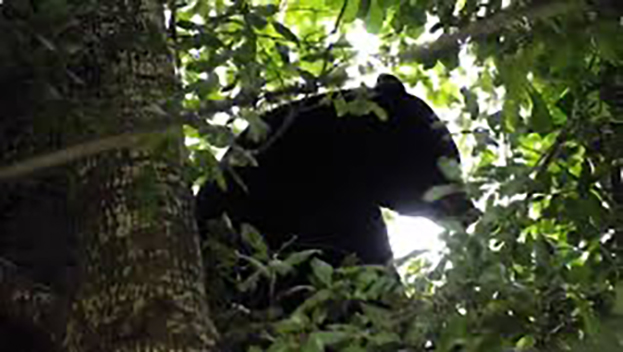Two new bear sightings reported in Lincoln County
Published 7:00 am Tuesday, July 16, 2024

- A black bear took a morning break in the backyard tree of a house in northeast Natchez near St. Catherine Creek in 2022. If you encounter a black bear it is best to step back and allow it to move along its way. Bear encounters become more frequent as bears move more around breeding time. (File Photo / The Natchez Democrat)
BROOKHAVEN — Black bears once roamed the hardwood forests of Southwest Mississippi and across the state until overhunting and habitat loss threatened the species. Mississippi has seen a recovery in the native population over the last few decades. Two new bear sightings were reported in Lincoln County.
One bear sighting was reported on the Homochitto National Forest in Caseyville and another in West Lincoln. Lincoln County has had five reported bear sightings since 2016 with two sightings near Caseyville and three sightings in West Lincoln.
Mississippi’s bear program is actively working to determine a more exact figure of the black bear population.
Trending
Mississippi Department of Wildlife, Fisheries and Parks reports there have been 577 black bear sightings since 2016. Bear sightings tend to increase in the summer time as bears move to look for breeding opportunities and new home ranges. Two species of black bears reside in Mississippi the Louisiana Black Bear and the American Black Bear. MDWFP has an interactive map found on the Black Bear Program page which shows where bears have been seen.
Black bear sightings in southwest Mississippi are as follows, five in Lincoln County, two in Pike County, two in Lawrence County, two in Jefferson Davis County, three in Amite County, four in Walthall County, 11 in Copiah County, 12 in Adams County, 17 in Jefferson County, 32 in Claiborne County, 24 in Franklin County and an estimated 40 in Wilkinson County.
Black bears become more active in the summer time as they start to breed and young males are kicked out of their mom’s home range. They are shy and secretive and by nature are not predatory.
Attacks by black bears are rare and there has never been a reported attack in Mississippi on a human. However, bears are large and powerful so humans should treat them with caution and respect.
You can report a bear sighting online to help Mississippi’s bear program in collecting data about the state bear population.




